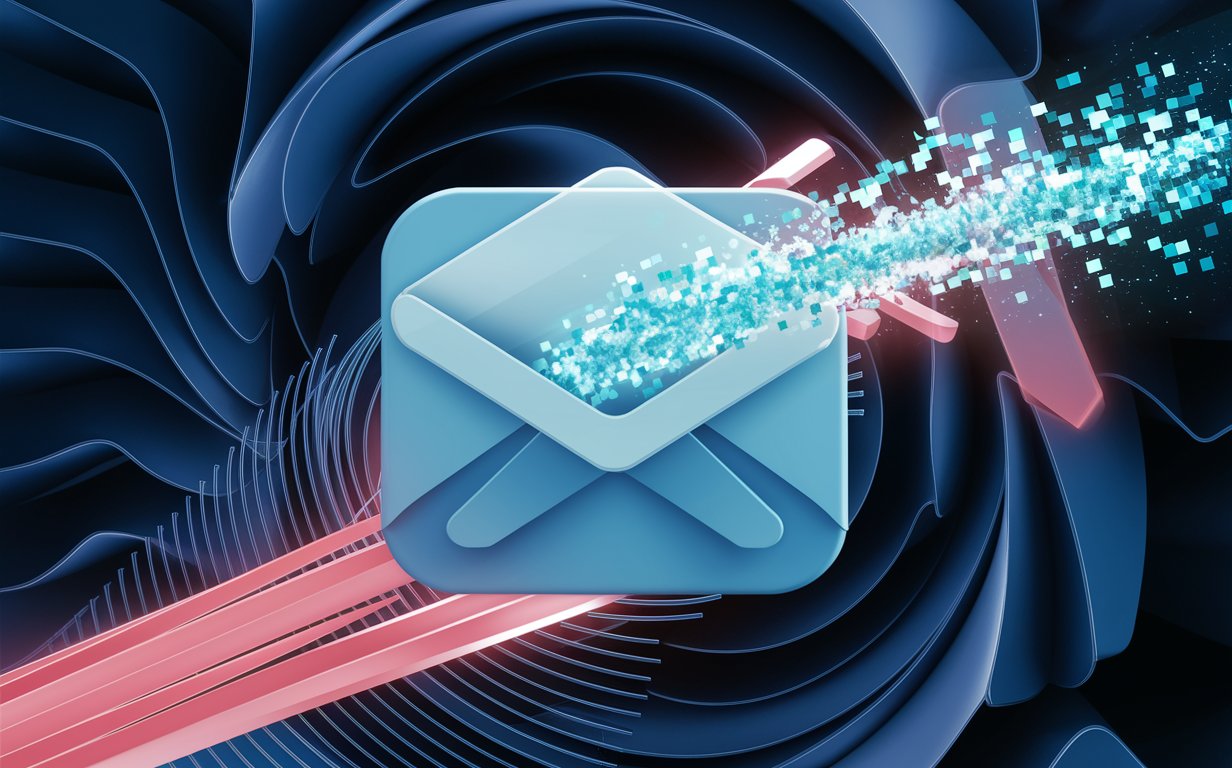Getting into the complex world of government e-mail usage and cybersecurity awareness is something you need to do in 2024. In this post, we delve into the best practices for using government e-mail systems securely and efficiently, ensuring you stay ahead in the ever-evolving cyber landscape. So, which of the following is a best practice for using government email? By understanding these principles, you’ll protect sensitive information and contribute to a safer digital environment.
Historical Context
The evolution of using government e-mail systems dates back to the early days of digital communication within governmental organizations. Initially, e-mails served as a convenient tool for internal communication, rapidly replacing traditional methods like memos and phone calls. Over time, the practice of using government e-mail became more structured, leading to the establishment of clear protocols and guidelines. As digital threats emerged, practices like send mass e mails copy and copy your personal e mail were discouraged to protect sensitive information.
By the early 2000s, security measures became stringent, discouraging mails copy your personal e and improper mail on your outgoing e-mails. The introduction of secure servers and encryption further reinforced the safe use reply aur when responding to sensitive content. Now, with a focus on preventing data breaches, guidelines emphasize careful management of e-mails created or received, with options provided for secure communication. These historical developments have led to the current landscape where, as time to get a head on cybersecurity measures, government employees are trained extensively to maintain secure digital environments. This focus ensures that all communications, whether work by making phone calls or sending e-mails, adhere to best practices.
Understanding the Importance of Best Practices in Government E-Mail Usage
In 2024, the digital world has become integral to government operations. This section explores why adhering to best practices when using government e-mails is critical. We’ll cover how these practices safeguard sensitive information and maintain the integrity of communications within governmental agencies. So Which of the following is a best practice for using government email?
What Constitutes a Best Practice for Using Government E-Mail?
What are best practices, and why are they essential? Here, we define what constitutes a best practice in the context of government e-mail usage. We’ll discuss the significance of these practices, including using a digital signature, ensuring the authenticity and integrity of e-mails, and maintaining a clear subject line for effective communication.
Expert Comment by Dr. Alex Stone, Renowned Cybersecurity Specialist
“Which of the following is a best practice for using government email? In the realm of using government e-mail, adherence to strict protocols is crucial for maintaining national security. One best practice is to always use a digital signature when sending hyperlinks; this not only verifies the sender’s identity but also ensures the integrity of the link, preventing potential cyber attacks. It’s essential to avoid including personal e-mail on your outgoing government e-mails, as this can compromise both personal and official data.
Following is not a best practice: using e-mail on your outgoing e-mails to send mass communications, especially when these e-mails copy your personal e-mail. This practice exposes sensitive information unnecessarily and poses a significant security risk. Furthermore, using flashcards or platforms like Quizlet for sensitive training or information sharing should be done cautiously, ensuring that all data shared complies with security standards.
For anyone working on reports or responding to inquiries, such as Tom working on a report that contains sensitive information, it’s vital to use secure channels and avoid making phone calls or responding to e-mails without proper encryption measures. Outgoings e-mails do not send sensitive information unless you’re confident in the security measures in place.
Lastly, a common misconception is that using a clear subject line mitigates all risks. While clarity is important, it is not a substitute for robust security measures. As we move forward, understanding and implementing these best practices will be pivotal in safeguarding national security through unauthorized disclosure and other potential threats.”
Dr. Alex Stone’s insights underscore the importance of diligent cybersecurity practices and the need for constant vigilance in using government communication tools.
Expert Comment by Dr. Sarah Collins, Cybersecurity Analyst and Consultant
“Which of the following is a best practice for using government email? In today’s digital landscape, using government e-mail requires strict adherence to security protocols to protect sensitive information. A key practice for using government e-mail involves ensuring that e mails copy your personal address are never included in official communications. This practice minimizes the risk of cross-contamination between personal and professional data with practice for using government e mail on your outgoing e communication.
It’s crucial to avoid including mail on your outgoing e-mails that could potentially expose sensitive information to unauthorized parties. Proper management of outgoing e mails is essential, and always following the recommended guidelines ensures that all data remains secure.
Following describes a common mistake: responding to an e-mail chain without verifying the recipients, which can lead to accidental disclosure. If you’re waiting for your help on a project or have an answer to your question, always verify the security of your communication channels before responding. Remember, send mass e-marils only when necessary and with appropriate security measures in place.
Among the options provided, always choose the most secure method of communication to maintain data integrity. Taking a head start on work by adhering to these practices not only ensures compliance but also contributes to a safer digital environment for all.”
Key Best Practices for Government E-Mail Security
1. Use a Digital Signature
One of the most critical best practices for using government e-mails is incorporating a digital signature. This practice ensures that the sender’s identity is verified and the message’s content has not been tampered with. In 2024, with increasing cyber threats, the use of digital signatures becomes even more crucial.
2. Avoid Sending Sensitive Information via E-Mail
It’s vital to understand that not all information should be transmitted via e-mail. Sensitive information, particularly sensitive compartmented information (SCI), should be handled with utmost care. This practice for using government e-mails helps prevent unauthorized access and potential breaches of national security.
Cyber Awareness Challenge 2024: What You Need to Know
The Cyber Awareness Challenge 2024 is an initiative aimed at enhancing cybersecurity protocols within government agencies. This section will outline what the challenge entails, the new standards introduced, and how these measures help in reducing the risk of cyber incidents.
Responding to E-Mails: Dos and Don’ts
When responding to e-mails, especially in a government setting, it’s essential to follow specific protocols. We’ll discuss the appropriate use of “reply all,” the importance of not copying your personal e-mail in government correspondence, and the best practices for responding to e-mails securely.
Expert Comment by Dr. Emily Hartman, Senior Cybersecurity Consultant
“Effective and secure communication is paramount when using government e-mail systems. A key practice for using government e-mail involves ensuring that sensitive information, particularly personally identifiable information, is not compromised. This can happen if protocols are not strictly followed, such as inadvertently sending sensitive data through insecure channels.
A common question, akin to ’25 which of the following best practices should be followed?’, can be found on platforms like brainly.com or studyx. The correct answer involves avoiding the use of personal emails in official correspondence. Government e-mail do not use for sending personal messages or attachments. This guideline extends to preventing practices like send mass e-mails copy your personal account, which exposes information unnecessarily.
For instance, when you use reply all when responding to an e-mail, you should be cautious not to include sensitive data inadvertently. The same goes for adding a package shipper notifying details that might compromise security if shared improperly. Furthermore, mass e-mails do not use for disseminating information to large groups without proper clearance – Which of the following is a best practice for using government email.
To illustrate, consider a situation where Annabeth becomes aware of a conversation with a co-worker that involved sensitive compartmented information (SCI). This scenario should trigger immediate reporting and adherence to strict security protocols to prevent leaks.
It’s crucial that outgoing e-mails do not use mass distributions unless absolutely necessary and approved. For instance, sending hyperlinks do not send them without verifying the recipients’ need-to-know status. Ensuring that hyperlinks do not send mass e-mails or include personal e-mails is a foundational security measure.
In closing, whether working on secure documents like Tom is working or handling daily communications, the primary goal is to lead to security improvements by following best practices diligently. Always consider the potential security implications of your actions, whether you’re using an LMS like Canvas, Moodle, and Pearson, or any other communication platform.”
The Risks of Sending Mass E-Mails
Why should you avoid sending mass e-mails in a government setting? Sending mass e-mails can lead to unnecessary exposure of recipients’ e-mails, increase the risk of phishing attacks, and potentially leak sensitive information. This section will provide a comprehensive overview of the risks and the following best practice guidelines.
Handling Unclassified Information: What You Should Know
Unclassified information, while not sensitive, still requires careful handling. We’ll discuss the best practice for using government e-mails when dealing with unclassified information, ensuring that even non-sensitive data is managed securely and responsibly.
The Role of Digital Signatures in Cybersecurity
Digital signatures play a pivotal role in cybersecurity. This section will explore how digital signatures authenticate the sender’s identity, prevent unauthorized changes to the message, and provide a secure way to verify e-mails. We’ll also cover how to implement digital signatures effectively.
Addressing Cybersecurity Issues: Common Challenges and Solutions
Cybersecurity remains a significant concern in 2024. This section will identify common cybersecurity issues faced by government employees and provide practical solutions to mitigate these risks. We’ll discuss phishing, malware, and unauthorized access, offering actionable steps to protect government e-mails.
The Importance of Cyber Awareness in 2024
Cyber awareness is not just about understanding cyber threats but also about being proactive in preventing them. We’ll discuss why cyber awareness is critical in 2024, the key components of a successful cyber awareness program, and how government employees can contribute to a safer digital environment.
Expert Comment by Dr. Jonathan Carter, Chief Information Security Officer
“Well, Which of the following is a best practice for using government email? When it comes to using government e-mail, strict adherence to best practices is essential to safeguard sensitive information. One critical practice for using government e-mail is ensuring that outgoing communications are securely managed. It’s important to note that 25 which of the following practices—such as including e-mails copy your personal e-mail or mails copy your personal e-mail—should be avoided to prevent data breaches.
For instance, never include a copy your personal e-mail address in government correspondence. This not only breaches protocol but also poses a significant security risk. Furthermore, refrain from including e mail on your outgoing e-mails any unnecessary recipients, especially when discussing sensitive matters. If you must communicate via e-mail, always verify that the e-mails on her government approved devices are secured, and outgoing e-mails do not send mass communications without proper clearance.
One best practice is to avoid using hyperlinks copy your personal e-mail or sending hyperlinks copy your personal e-mail address. This practice minimizes the risk of unauthorized access. Additionally, the use of a signature when sending hyperlinks copy can help authenticate the sender and ensure the integrity of the message.
If security issues arise, such as someone becomes aware that a conversation containing sensitive information was overheard by someone, the immediate action should you take is to report the incident through the proper channels. Always consider the security implications when using a government approved mobile device, and remember that e-mails do not send mass communications without explicit authorization.
To maintain a secure environment, carefully select the correct options for communication and always think critically about the recipients receiving the information. In the case of handling benefits or information like a health plan, ensure that all data is transmitted securely and only to authorized individuals.
Ultimately, these practices help you get a head start on maintaining a secure workplace by start on work by making secure choices every day. Whether it’s about the 50 gift card policy or simply verifying devices are present and secure, it’s crucial to always follow established security protocols.”
Practical Tips for Following Best Practices in Government E-Mail Usage
So, Which of the following is a best practice for using government email? We’ll conclude with practical tips on following best practices for using government e-mails. This section will include a checklist of dos and don’ts, best practices for handling sensitive information, and guidelines for ensuring secure communication.
Bullet Point Summary: Key Takeaways
- Use a digital signature: Verifies sender identity and message integrity.
- Avoid sending sensitive information: Protects national security.
- Responding to e-mails: Use “reply all” judiciously and avoid copying personal e-mails.
- Avoid sending mass e-mails: Reduces the risk of data breaches.
- Handle unclassified information carefully: Ensures all data is managed securely.
- Understand cybersecurity issues: Be aware of phishing, malware, and unauthorized access.
- Participate in the Cyber Awareness Challenge 2024: Stay informed and proactive.
By adhering to these best practices, government employees can ensure their e-mail communications are secure, efficient, and compliant with the latest cybersecurity standards. The Cyber Awareness Challenge 2024 offers an opportunity to enhance your understanding and implementation of these practices, safeguarding both individual and national security.




